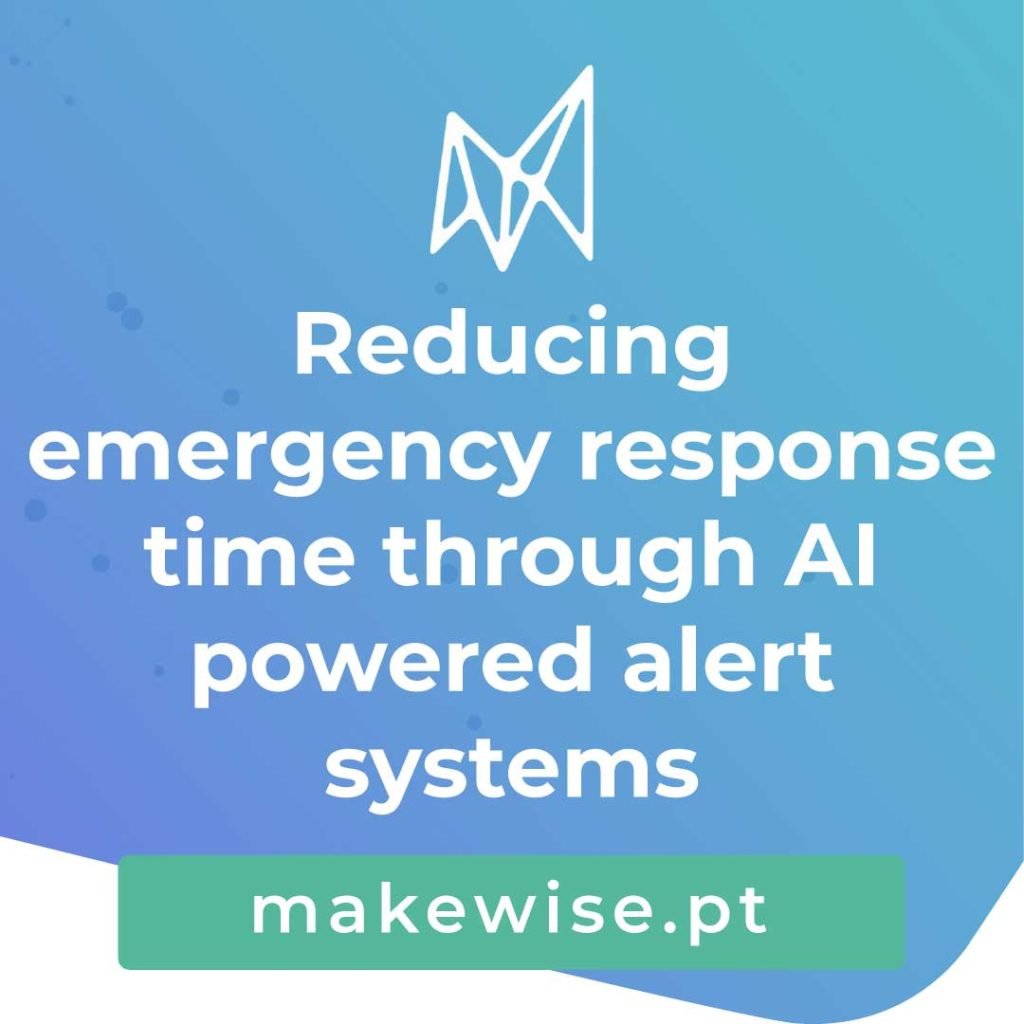Emergencies strike without warning, and every second counts. Whether it’s a natural disaster, medical crisis, or infrastructure failure, delayed responses can mean greater damage and loss of life. At MakeWise, we deeply understand the emotional and logistical weight carried by first responders and emergency management teams. In this article, we’ll explore how Artificial Intelligence (AI) can drastically shorten response times and improve outcomes when it matters most.
What Is AI in Emergency Response?
AI in emergency response refers to intelligent systems that analyze data—like sensor readings, satellite imagery, or video feeds—in real time to identify threats and enable faster, smarter action. For example, AI-powered predictive models can detect early warning signs of wildfires or floods, while computer vision can assess disaster damage and alert rescue teams automatically.
Key capabilities include:
- Predictive analytics: forecasting disasters before they occur
- Computer vision: interpreting visual data to detect critical event cues
- NLP & sensor fusion: analyzing emergency call transcripts, telemetry, and other inputs
Together, these systems deliver situational awareness at machine speed, transcending the limits of manual monitoring.
The benefits of AI in emergency response







AI-powered alert systems bring remarkable advantages across the emergency response chain:
- Faster threat detection: AI models analyze incoming real-time data—such as satellite or sensor feeds—to detect anomalies and alert responders instantly, eliminating delays due to manual data review.
- Improved accuracy & situational awareness: with advanced vision and language models, AI reduces false alarms while recognizing subtle patterns in data, providing precise context on the type, location, and scale of emergencies.
- Optimized resource deployment: by predicting incident likelihood and severity, AI helps dispatch appropriate teams, equipment, and supplies to the locations where they’re most needed.
- Proactive planning & preparation: AI-driven simulations and pattern analysis support planning efforts, such as pre-positioning assets in wildfire zones or flood-prone areas.
- Efficient real-time adjustments: during unfolding events, AI can continuously reanalyze updated data to adjust resource allocations, re-route responders, and expedite decision-making.
Overall, this means faster, smarter, more effective responses—and lives saved.
MakeWise Spotlight: AID.VISION
MakeWise’s flagship solution, AID.VISION, brings AI‑powered alerts directly to emergency applications:
- Automatic lane and traffic flow direction recognition
- Automated incident detection: Wrong-way vehicles, slow-moving or stationary vehicles on the shoulder, traffic congestion, pedestrians and animals on the roadway.
- Real-time alerts and warnings
- Integration with other IT systems
By automating early detection and intelligent alerting, AID.VISION accelerates the entire emergency response workflow and bridges critical gaps between detection and action.
AI‑powered alert systems are redefining emergency response—delivering unmatched speed, precision, and adaptability when crises strike. With MakeWise’s AID.VISION, organizations can detect threats earlier, deploy the right resources sooner, and make smarter decisions under pressure. In emergencies, every second counts—AI ensures those seconds aren’t wasted.

